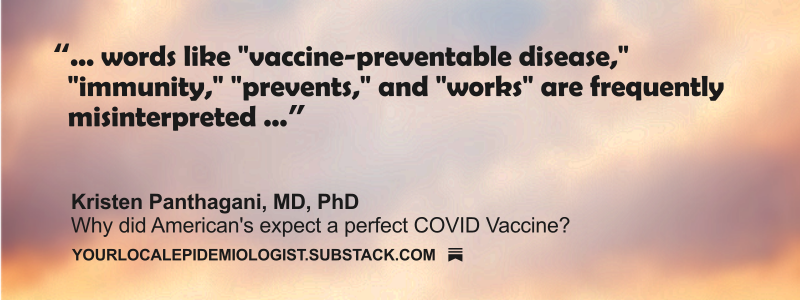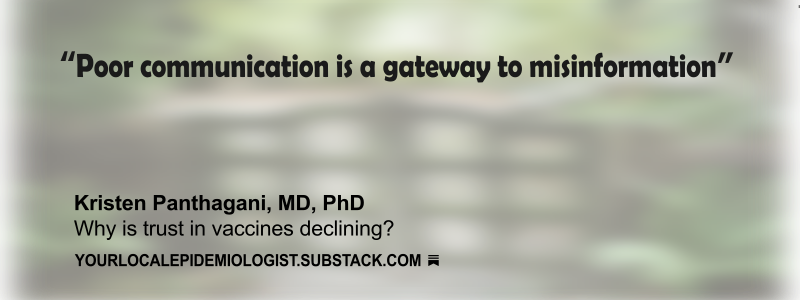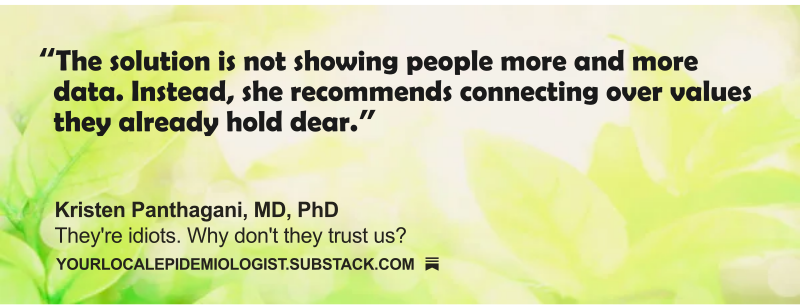August 13, 2025

Imagine a world without the medical marvels we often take for granted. No aspirin for that throbbing headache, no antibiotics to fight off a dangerous infection, no medications to lower blood pressure and prevent a stroke. These scientific breakthroughs have become so ingrained in our lives that we barely notice their profound impact. Vaccines, in particular, stand as a testament to the power of scientific innovation, having saved millions of lives worldwide by preventing deadly diseases that once ravaged populations. When was the last time you heard of someone in an iron lung?
Yet, a stark paradox looms over us. While 1.5 million children succumb annually to vaccine-preventable diseases due to lack of access, a growing wave of vaccine hesitancy is sweeping through developed nations, rekindling outbreaks of once-controlled childhood illnesses (at this moment, Texas, Alberta, and Ontario are seeing a resurgence in measles outbreaks due to low vaccination rates in children). This troubling trend is symptomatic of a much deeper issue: a widening chasm of trust between the public and our health institutions.
The COVID-19 pandemic exacerbated this crisis of confidence. Mixed messages, policy reversals, and poor communication from health authorities during this global crisis significantly eroded public trust in these vital institutions and fueled social media critics who used this opportunity to sow more seeds of doubt and promote misinformation.

Richard J. Tofel of the Gallatin Advisory captured the essence of our communications failures, “too much of the communication sought to oversimplify what is complex and downplay what is uncertain… Beyond that, in communicating with the broad public, too little attention has been paid to the necessity of communicating in language they understand.”
The inconsistent messaging and lack of transparency from health authorities have left many people confused and skeptical. So how do we bridge this trust gap? The foundation of this answer lies in effective communication. We must start by openly and honestly acknowledging our missteps and work towards rebuilding trust through clear, transparent, consistent, and evidence-based messaging that leaves no room for ambiguity or misinterpretation.

This means using precise language, avoiding jargon, and providing context to ensure that messaging is understood exactly as intended, across diverse audiences and education levels. But how can we deliver these messages in a way that resonates and connects with different demographic groups?
Epidemiologist Katelyn Jetelina suggests that “trusted messengers” like family doctors and community leaders play a pivotal role not only in changing minds and addressing concerns, but also in creating a space where patients feel genuinely heard and understood. Inspired by climate scientist Katherine Hayhoe’s approach, Kristen Panthagani, MD, urges us to connect over shared values.

Values-based messaging can help bridge the trust gap widened during the pandemic, because when we connect over values, we’re more likely to be seen as allies rather than distant authorities. However, this approach requires developing an understanding of a patient’s core values and beliefs using skillsets that many providers have not been formally trained to use. If you have been following our blog series on The Care Gap, you know that we also have a crisis in women’s health, with many women feeling unheard and dismissed by the healthcare system. When people feel ignored and underserved, they can fall prey to misinformation and potentially harmful “alternative” treatments as they seek options to address their conditions.
Our family physicians and healthcare professionals stand at the frontlines of this trust-building effort. We must equip them with the right communication tools to address legitimate concerns and combat misinformation. Effective communication with patients about their values and beliefs demands a combination of active listening, empathy, and cultural awareness – skills that are often not emphasized enough in traditional medical education. Targeted Continuing Medical Education (CME) is an ideal vehicle to deliver and cultivate these crucial trust-building skills.
In this challenging landscape, one thing is clear: rebuilding trust in our medical institutions is not just desirable—it’s imperative. Our health, and the health of future generations, depends on it. In our next article, we’ll discuss how the right training on patient-centered care can transform healthcare professionals into trust architects, equipping them with the tools to rebuild patient confidence in the clinic and the broader community. From enhancing cultural competence to mastering empathetic communication, we’ll explore how a focus on building and nurturing these skills can bridge the trust gap and revolutionize patient-provider relationships.